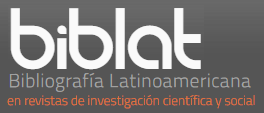Recreational soccer practice in Brazil for diabetic and hypertense adults
DOI:
https://doi.org/10.5433/1679-0367.2020v41n1p55Keywords:
Diabetes mellitus, Hypertension, Motor activity, Recreation, SoccerAbstract
The study analyzed the recreational soccer practice of diabetics and hypertensive adults (18 years of age or older) and verified the contribution of this modality to the analyzes of the physical activity goal recommended by the World Health Organization. Cross-sectional data on the practice of physical activity were examined by the Ministry of Health in 2014, which approximately 41,000 adults were interviewed by phone. Approximately 2.4% of diabetics and 3.1% practice hypertension related to football as the main recreational physical activity, with a predominance of middle-aged men (35-44 years), married and with 9 to 12 years of schooling. Most of them (80%) play football once twice a week, with a daily duration of 60 minutes or more. Among recreational footballers, 80% of hypertensive and 20% of diabetics perform sufficient physical activity. Diabetics select information about the importance of regular activity to maximize the effects of physical activity without glycemic control.Downloads
References
2. Murray CJL, Phil D, Lopez ADL. Measuring the global burden of disease. N Engl J Med. 2013; 369:448-457. doi: 10.1056/NEJMra1201534.
3. World Health Organization. Global report on diabetes. Geneva: WHO; 2016.
4. Ministério da Saúde (BR). Estratégias para o cuidado da pessoa com doença crônica: diabetes mellitus. Brasília (DF): Ministério da Saúde; 2013. (Cadernos de atenção básica, n. 36).
5. World Health Organization (WHO). A global brief on hypertension: silent killer, global public health crisis [Internet]. 2013 [cited 2018 Apr 21]. Available from: http://publichealthwell.ie/node/466541.
6. Secretaria de Estado da Saúde do Paraná (PR). Linha guia de hipertensão arterial / SAS. 2. ed. Curitiba: SESA; 2018.
7. Mozaffarian D, Benjamin EJ, Go AS, Arnett DK, Blaha M, Cushman M, et al. Heart disease and stroke statistics - 2015 update: a report from the American Heart Association. Circulation. 2015;131(4):29-322. doi: 10.1161/CIR.0000000000000152.
8. Booth FW, Roberts CK, Thyfault JP, Ruegsegger GN, Toedebusch RG. Role of inactivity in chronic diseases: evolutionary insight and pathophysiological mechanisms. Rev Physiol. 2017; 97:1351-1402. doi: doi.org/10.1152/physrev.00019.2016.
9. Lima DF, Piovani VGS, Lima LA. Recreational soccer practice among adults, in Brazilian capitals, 2011-2015. Epidemiol. Serv. Saude. 2018;27(2):e2017284. doi: org/10.5123/s1679-49742018000200013.
10. Lima DF, Levy RB, Luiz OC. Recomendações para atividade física e saúde: consensos, controvérsias e ambiguidades. Rev Panam Salud Publica. 2014;36(3):164-70.
11. Department of Health and Human Services (US). Physical Activity Guidelines for Americans, 2nd edition. Washington, DC: U.S. Department of Health and Human Services; 2018.
12. Cruz MS, Bernal RGI, Claro RM. Tendência da prática de atividade física no lazer entre adultos no Brasil (2006-2016). Cad. Saúde Pública. 2018;34(10):e00114817. doi: 10.1590/0102-311X00114817.
13. Hallal PC, KnuthI AG, Reis RS, Rombaldi AJ, Malta DC, Iser BPM, et al. Tendências temporais de atividade física no Brasil (2006-2009). Rev. bras. Epidemiol. [Internet]. 2011 [citado 2018 jan 04];14(1):53-60. Disponível em: http://www.scielo.br/scielo.php?script=sci_arttext&pid=S1415-790X2011000500006&lng=en&nrm=iso. doi:org/10.1590/S1415-790X2011000500006.
14. Ministério da Saúde (BR). Vigitel - Brasil 2017: Vigilância de Fatores de Risco e Proteção para Doenças Crônicas por Inquérito Telefônico. Brasília: Ministério da Saúde; 2018.
15. Ministério da Saúde (BR). Vigitel - Brasil 2014: Vigilância de Fatores de Risco e Proteção para Doenças Crônicas por Inquérito Telefônico. Brasília: Ministério da Saúde; 2015.
16. World Health Organization (WHO). Global recommendations on physical activity for health. Genebra: (WHO); 2010.
17. Organización Mundial de la Salud (OMS). Informe mundial sobre la diabetes. Ginebra: OMS; 2016.
18. Conselho Nacional da Saúde (BR). Resolução 510, de 7 de abril de 2016. [Internet]. 2016 [citado 2018 maio 24]. Disponível em: http://conselho.saude.gov.br/resolucoes/2016/Reso510.pdf.
19. Florindo AA, Farias Junior JC, Wells JCK, Hallal PC. Epidemiology of recreational football in Brazil: prevalence and association with risk factors for chronic diseases and self-rated health in adults. Motriz. 2013;19 (1):224-230.
20. Ministério da Saúde (BR). Vigitel - Brasil 2011: Vigilância de fatores de risco e proteção para doenças crônicas por inquérito telefônico. Brasília: Ministério da Saúde; 2012.
21. Bird SR, Hawley JA. Update on the effects of physical activity on insulin sensitivity in humans. 2017 BMJ Open Sport Exerc Med. 2017;2(1):1-27. doi: 10.1136/bmjsem-2016-000143.
22. Cartee GD. Roles of TBC1D1 and TBC1D4 in insulin- and exercise-stimulated glucose transport of skeletal muscle. Diabetologia. 2015;58:19-30. doi: 10.1007/s00125-014-3395-5.
23. Australian Institute of Health and Welfare (AU). Physical activity across the life stages. [Internet]. 2018 [cited 2019 Jan 16]. Available from: https://www.aihw.gov.au/getmedia/c249ef97-e219-44df-a8bd-f5e50d04064c/aihw-phe-225.pdf.aspx?inline=true
24. Skovenborg Erik. Shift work and diabetes: alcohol consumption as a risk fator. BMJ. 2019; 364:177. doi: https://doi.org/10.1136/bmj.l177.
25. Aladin A, Chevli,P, Ahmad MI, Rasool S, Herrington D. Alcohol consumption and risk of hypertension. J. Am. Coll. Cardiol. 2019;73(9):12. doi: 10.1016/S0735-1097(19)33774-X.
26. Roerecke M, Kaczorowski J, Tobe SW, Gmel G, Hasan OSM, Rehm J. The eff ect of a reduction in alcohol consumption on blood pressure: a systematic review and meta-analysis. The Lancet Public Health. 2017;2(2):e108-e120. doi: 10.1016/S2468-2667(17)30003-8.
Downloads
Published
How to Cite
Issue
Section
License
Copyright (c) 2020 Semina: Ciências Biológicas e da Saúde

This work is licensed under a Creative Commons Attribution-NonCommercial 4.0 International License.
adopts the CC-BY-NC license for its publications, the copyright being held by the author, in cases of republication we recommend that authors indicate first publication in this journal.
This license allows you to copy and redistribute the material in any medium or format, remix, transform and develop the material, as long as it is not for commercial purposes. And due credit must be given to the creator.
The opinions expressed by the authors of the articles are their sole responsibility.
The magazine reserves the right to make normative, orthographic and grammatical changes to the originals in order to maintain the cultured standard of the language and the credibility of the vehicle. However, it will respect the writing style of the authors. Changes, corrections or suggestions of a conceptual nature will be sent to the authors when necessary.
This Journal is licensed with a license Creative Commons Assignment-NonCommercial 4.0 International.

















